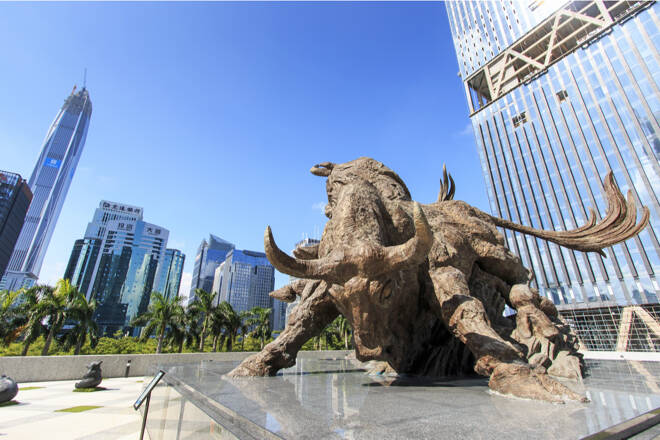Advertisement
Advertisement
Hang Seng Index, ASX 200, Nikkei 225 Index: The Ripple Effect of Rising US Treasury Yields
By:
Global markets waver amidst varied forecasts; the landscape is tinged with uncertainty as ASX 200, Hang Seng, and Nikkei react to US and Chinese developments.
Key Insights:
- Hang Seng and the Nikkei guided the ASX 200 into red terrain on Tuesday; Asian markets showed vulnerability.
- China and the real estate sector remain a focal point as investors await industrial profit numbers for August.
- Overnight: US house prices counter softer US Consumer Confidence numbers to support a hawkish Fed interest rate trajectory.
Overview of the Tuesday Session
On Tuesday, the Hang Seng Index and the Nikkei led the ASX 200 into negative territory.
Overnight US economic indicators from Monday revealed an unexpected fall in national activity. The Chicago Fed National Activity Index fell from 0.7 to -0.16 in August versus forecasts of an increase to 0.15. The US equity markets brushed aside the weaker-than-expected figures. However, concerns lingered among investors over the prospect of enduring higher interest rates.
On Monday, the S&P 500 and the Dow saw gains of 0.40% and 0.13%, respectively. The NASDAQ Composite Index rose by 0.45%.
Rising US Treasury yields and China real estate woes sent the Asian equity markets south on Tuesday. Significantly, yields on US 10-year Treasuries reached their highest levels since 2007, causing yield-sensitive Asian tech stocks to tumble.
FOMC voting member Neel Kashkari set the mood ahead of the Asian opening bell. Kashkari reportedly said US interest rates needed to go higher and stay higher for longer to bring inflation to 2%.
Amidst rising US Treasury yields, investors also responded to the news of the beleaguered Chinese developer China Evergrande missing an onshore bond repayment.
The Fed, a Soft Landing, and China in Focus
The US equity markets ended the Tuesday session with heavy losses. US house prices unexpectedly rose in July, fueling bets on further Fed rate hikes to cool the real estate market. Weaker-than-expected US consumer confidence figures failed to counter the uptick in property prices. The threat of a US government shutdown contributed to the Tuesday losses.
The NASDAQ Composite Index slid by 1.57% on Tuesday, with the Dow and S&P 500 falling by 1.14% and 1.47%, respectively.
The US equity markets will set the tone this morning. However, real estate-related news from China and the Asian economic calendar also need consideration.
Inflation figures from Australia could support the higher-for-longer mantra, bearish for stocks. Economists forecast the Australian annual inflation rate to accelerate from 4.90% to 5.20% in August.
Industrial profit figures from China will also influence market risk sentiment. Another profit slump would add to the gloomy outlook for the Chinese economy. Economists forecast industrial profits to decline by 10.0% (YTD) in August year-over-year versus a 15.5% slump in July.
In the Futures Markets, the ASX 200 and the Nikkei 225 were down 22 and 170 points, respectively.
ASX 200
The ASX 200 fell by a relatively modest 0.54%, with the S&P/ASX All Technology Index (XTX) declining by 0.50%. Mining stocks struggled, with the S&P/ASX 300 Metal & Mining Index (XMM) tumbling by 1.76%. The big four banks offered modest support in a mixed session.
Rio Tinto (RIO) and Fortescue Metals Group (FMG) slid by 2.01% and 2.09%, respectively. Newcrest Mining (NCM) and BHP Group Ltd (BHP) ended the session down 2.09% and 1.93%.
ANZ Group (ANZ) and the Commonwealth Bank of Australia (CBA) rose by 0.44% and 0.20%, with the National Australia Bank (NAB) gaining 0.07%. Westpac Banking Corp (WBC) bucked the trend, falling by 0.33%.
Things were no better for oil stocks. Woodside Energy Group (WDS) and Santos Ltd (STO) ended the day down 1.02% and 0.52%, respectively.
Hang Seng Index
The Hang Seng Index followed a 1.82% slide from Monday with a 1.48% decline. Real estate stocks fell again, with the Hang Seng Mainland Properties Index (HSMPI) ending the session down 2.17%.
China Evergrande Group (HK:3333) fell by 8.14% as investors responded to the missed onshore bond repayment.
Beyond the property sector, Alibaba Group Holding Ltd (HK:9988) and Tencent Holdings Ltd (HK:0700) declined by 0.47% and 1.45%, respectively.
Bank stocks tracked the broader market into negative territory. China Construction Bank (HK:0939) and the Industrial and Commercial Bank of China (HK:1398) fell by 0.68% and 1.33%, respectively. HSBC Holdings PLC (HK:0005) declined by 1.06%.
Nikkei 225
(Graph for reference purposes only)
The Nikkei 225 reversed a 0.85% gain from Monday, sliding by 1.11% on Tuesday. A steady USD/JPY at 148 provided little comfort to export stocks that favor a weaker Yen.
Sumitomo Mitsui Financial Group (8316) and Mitsubishi UFJ Financial Group bucked the bearish trend, gaining 1.64% and 0.96%, respectively.
However, the main components within the Nikkei ended the session in negative territory.
Tokyo Electron Limited (8035) slid by 3.70%. KDDI Corp. (9433) and Fast Retailing Co (9983) ended the session with 1.00% losses. SoftBank Group Corp. (9984) and Sony Corp. (6758) declined by 0.84% and 0.97%.
For upcoming economic events, check out our economic calendar.
About the Author
Bob Masonauthor
With over 28 years of experience in the financial industry, Bob has worked with various global rating agencies and multinational banks. Currently he is covering currencies, commodities, alternative asset classes and global equities, focusing mostly on European and Asian markets.
Advertisement
